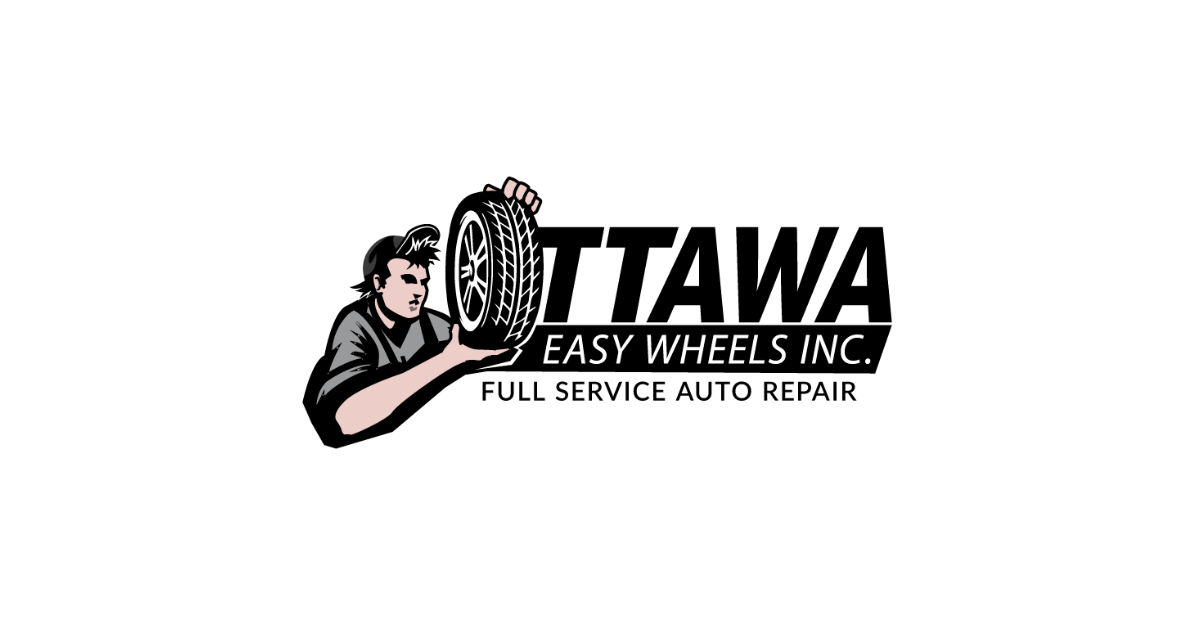Today, with the majority of cities undergoing urban sprawl, people are traveling further distances every day. This added mileage and time on the road eats away at more than just your gas, it also wears on your tires. Tires are without a doubt one of the most important parts to your vehicle. They are what get us from point A to point B! Today we will focus on the tires’ ability to transmit traction and braking forces that allows your car to maintain grip and minimize road shocks. The distinction between a good tire and a one that needs to be replaced can be easily checked at home. Keep reading to learn from the guys at Ottawa Easy Wheels so that you can do it yourself. And when you’re ready, come to our Orleans Auto Shop for your tire change.
What is Tread Depth?
When you hear the word “tread” in the context of the automotive industry, you’re talking about the rubber that helps create traction by gripping the road and displacing water/dirt/snow/ice from your vehicle’s path. In layman’s terms, when you’re looking at a tire, it’s the pattern that you see on part of the tire that makes contact with the road. As you drive your vehicle, this rubber wears away until eventually, it’s time to replace your tires. If you’ve ever heard of tires that are “bald”, these are tires that have completely worn through their tread and are left with a flat surface. Tire tread is measured in 32nds of an inch. Most new all-season tires come with about 10/32nds on them, whereas winter tires come with anywhere between 10-13/32nds of an inch of tread. We recommend replacing your all-season tires when they wear down to 4/32nds. We recommend replacing your winter tires when they wear down to about 5/32nds.
We might recommend replacing your tires a little earlier than that if they are nearing those numbers at the beginning of a season. We make that recommendation based on where we foresee the tires being at the end of the season.
Tread Depth Levels: What to Look For and When
All-season tires and summer tires have a harder rubber base, which allows them to cruise better. On the contrary, winter tires have softer rubber, which makes them easier to grip. During Ottawa winters, having tires that have a deeper tread, is necessary for navigating your way through the snow and ice safely. However, during the warmer months, having too much tread can lead to damage, and therefore it is important to change to less grip-heavy tires. As a rule of thumb, you should be using winter tires when driving in conditions under 7°C (45°F), and vice versa – you want to switch out to your summer tires at anything consistently over 7°C (45°F). We store and change tires at our Orleans Auto Shop and we also have mobile mechanic services for select clients, ask us about it!
Ways to Measure Tread Depth
There are different ways to measure the tread depth of your vehicle, but today we will only cover two.
Using a Tread Depth Gauge
- The first and best way to measure tire tread is to use a tread depth gauge
- In order to do so, you must first set up your tire so that it is easily measurable across the face of the tire
- From there, you take your tread depth gauge and push it into measuring different sections across the face of the tire – which will tell you the tread depth at different parts of the tire
- If you notice that all sections of the tire are relatively identical in tread, then your tire is wearing evenly
Use a Toonie
- Another way to efficiently measure your tire is with the toonie trick – this is good when you don’t have access to other tools
- To start, put the outside edge of the toonie in your tire’s tread (ensure the polar bear on your coin is standing upright)
- If you notice that the tread reaches the polar bear’s paws, your tires are probably fairly new
- If you notice that the tire depth reaches all the way across the silver, they’re about half life
- If your tire tread reaches only about half-way into the letters, it’s time to call Ottawa Easy Wheels for a tire change!
If you only have a loonie, check out our video on how to measure tire tread this way instead! Co-owner Dan also explains in further detail how the tire tread measurements are taken and what they mean.
For more information on tire tread depth and other car needs, book an appointment at our Orleans Auto Shop or visit the Ottawa Easy Wheels website: https://ottawaeasywheels.com/!
